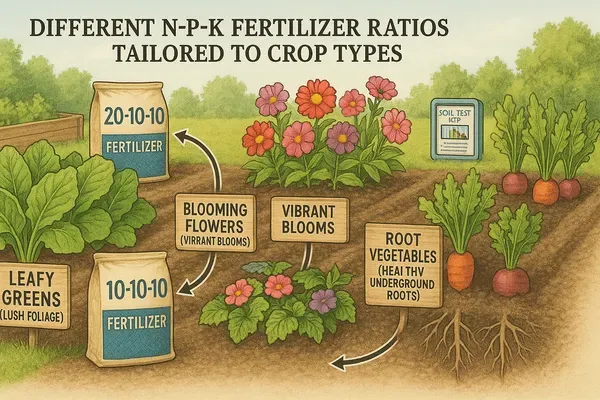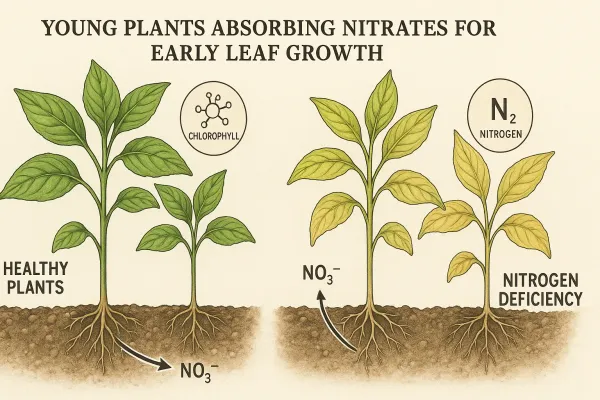Avoid your inquiry is delay response, please enter your WhatsApp/Skype along with the message, so we can contact you at the very first time.
We will reply you within 24 hours. If for urgent case, please add WhatsApp/WeChat:
Warning: Undefined variable $public in /www/wwwroot/lvfertilizer.com/wp-content/themes/hyhadmin/header.php on line 350
Warning: Trying to access array offset on value of type null in /www/wwwroot/lvfertilizer.com/wp-content/themes/hyhadmin/header.php on line 350
,. Or call
Warning: Undefined variable $public in /www/wwwroot/lvfertilizer.com/wp-content/themes/hyhadmin/header.php on line 350
Warning: Trying to access array offset on value of type null in /www/wwwroot/lvfertilizer.com/wp-content/themes/hyhadmin/header.php on line 350
directly.
Your cabbages look tired, the soil feels spent, and yields slip year after year. That frustration often comes down to using the wrong N-P-K ratio. Dial in a smarter fertilizer plan today, and watch roots thicken, flowers pop, and profits climb.
There is no single “best” N-P-K ratio. Leafy crops crave higher nitrogen like 20-10-10, blooming plants prefer balanced 10-10-10 or phosphorus-rich 5-15-15, while root vegetables thrive on 5-10-10. Test soil first, then match the ratio to each growth stage for vigorous, healthy growth and maximum yields.

1.What Does the N-P-K Ratio on a Fertilizer Bag Really Mean?
2.Why Nitrogen Plays a Vital Role in Leaf & Stem Growth
3.How Phosphorus Stimulates Root Growth and Early Blossoms
4.The Power of Potassium: Keeping Plants Healthy Under Stress
5.Choosing the Right NPK Fertilizer for Different Plants & Gardens
6.10-10-10 vs 5-5-5 Fertilizer – Which Ratio Is Best and When?
7.Matching Ratio to Growth Stage: Seedling, Vegetative, Fruiting
8.Getting Results with Organic Fertilizer & the N-P-K Ratio of Organic Fertilizers
9.Avoiding Stunted Growth: Balanced vs High-Nitrogen NPK Fertilizers
10.Top Application Tips: How Much Fertilizer to Use & When
11.Real-World Case Studies: Commercial Farms Boost Yields with Tailored Ratios
12.Action Plan: Partner with a Certified Chinese Manufacturer for Custom Blends
Every fertilizer bag carries three bold numbers—say 10-10-10. These numbers show the ratio of nitrogen, phosphorus, and potassium (often written as N-P-K). If the label reads 20-5-5, that means that the fertilizer contains 20 % nitrogen, 5 % phosphorus, and 5 % potassium by weight.
| N-P-K Ratio | Best Use | Sample Product |
|---|---|---|
| 20-10-10 | Leafy greens, lawns | Nitrogen-rich fertilizer |
| 10-10-10 | General garden feed | Balanced 10-10-10 |
| 15-15-15 | Orchards, field crops | NPK 15-15-15 |
| 20-20-20 | Container plants | Water-soluble 20-20-20 |
| 5-15-15 | Bloom boosters | Custom fertilizer blends |
The ratio represents available macro-nutrients. Because different plants and soils vary, the ratio will depend on local conditions. Soil testing first helps tailor your fertilizer choice and prevents wasting money—or causing stunted growth—by overloading one element.

Plants make lush green leaves by converting nitrogen into chlorophyll. During early leaf growth, young plants gobble up nitrates quickly. If the nutrient in the fertilizer runs low, leaves turn pale and weak plants appear.
Field Insight: A farm trial in Shandong showed spinach biomass jumping 22 % when switching from a balanced NPK ratio to a fertilizer with a higher nitrogen ratio (20-10-10) for the first 30 days.
Yet more is not always better. Too much nitrogen late in the season delays fruit ripening. Smart growers select the right dose at each growth stage to keep yields on track.
Phosphorus stimulates root growth by energizing cell division and sugar transport within the plant. Seedlings dressed with 5-15-15 at sowing develop strong root systems, anchor quickly, and resist drought.
When flowering plants hit bud stage, phosphorus unlocks brighter petals and heavier seed fill. Deficiency symptoms—purple veins or slow blooming—often signal the need for a P-rich npk fertilizer. Because phosphorus moves slowly in cool soil, banding a starter dose close to seeds can avoid stunted growth in spring.
From tomatoes fighting off blight to wheat braving heat waves, potassium plays a pivotal role in plant immunity. It balances water pressure inside cells, thickens cell walls, and helps enzymes fire faster.
Savvy growers top-dress 0-0-60 or an 8-8-24 blend mid-season, ensuring plants get the nutrients they need for final fill.
Because plants you are growing span dozens of species, no single balanced fertilizer suits all. Here’s a fast‐track guide:
| Type of Plant | Growth Focus | Suggested Ratio | Why It Works |
|---|---|---|---|
| Lettuce, kale | Leaf and stem growth | 20-10-10 | High nitrogen fuels lush leaves |
| Tomatoes, roses | Flower & fruit | 10-20-20 | Extra phosphorus & potassium support blooms |
| Carrots, beets | Root growth | 5-10-10 | Low N prevents forked roots |
| Young trees | Strong root & wood | 18-5-15 | Balanced macro-nutrient supply |
Tailor your fertilizer choice to soil test results. Even a perfect-sounding ratio can backfire if your soil already holds ample nitrogen or potassium.
For custom cropping programs, our R&D lab mixes exclusive blends—ideal for agricultural distributors & importers seeking private-label products or government projects needing region-specific formulations.
A classic garden debate: Is a 10-10-10 fertilizer always superior to a milder 5-5-5 fertilizer? The answer lies in your soil fertility and plant density.
Using the higher-analysis product at half rate can mimic 5-5-5 while saving freight cost—proof that ratio reflects percentage, not necessarily total pounds applied.
Plants change fast, and so should your fertilizer schedule.
| Growth Stage | What Plants Need | Ideal N‑P‑K Ratio | Why This Ratio Is Best |
|---|---|---|---|
| Seedling | Strong root systems | 5‑15‑15 | Extra phosphorus drives early cell division & root growth |
| Vegetative push | Leaf and stem growth | 20‑10‑10 | High nitrogen builds chlorophyll for rapid biomass |
| Bud set | Flower formation | 10‑30‑20 | Extra P & potassium prime blossoms |
| Fruit fill | Optimal growth & flavor | 8‑12‑24 | High K moves sugars within the plant |
| Finish | Healthy growth through stress | balanced 14‑14‑14 | Even macro‑nutrient feed prevents late‑season crashes |
A quick soil test every 30 days helps confirm that the ratio represents what the crop still lacks, preventing over‑application that can result in stunted growth.
“Slow and steady” often wins the race—especially when you mix organic fertilizer into the program.
Because each fertilizer bag varies, always read labels; the numbers on a fertilizer marked organic still follow the same N‑P‑K rules.
Note that the N‑P‑K ratio on organic labels can look low, but nutrients release slowly and remain available longer. Blending synthetics with organics often gives the best of both worlds—rapid green‑up plus soil health.
Need tailored organic‑synthetic blends? Explore eco‑hybrid series for ready OEM packaging.

Too much N can be just as bad as too little. Plants may shoot sky‑high, only to flop or invite pests. The fix is a balanced fertilizer that feeds all three macro‑nutrients.
Common signs your ratio is off
Remember, the amount of fertilizer matters. Doubling the rate to “speed things up” can burn roots and literally stunt growth. When in doubt, split the dose—half now, half in 10 days—to keep plants healthy.
| Farm | Crop | Original Ratio | Tailored Ratio | Yield Gain |
|---|---|---|---|---|
| Xinjiang Co‑op | Field cotton | 46‑0‑0 urea only | 16‑8‑24 split | +18 % lint, +11 % root biomass |
| Kenya NGO Project | School gardens | None | 10‑10‑10 starter, 5‑10‑15 top‑dress | +2.1 t/ha vegetables |
| OEM Brand “GreenEdge” | Bagged retail line | Generic 14‑14‑14 | Crop‑specific packs (e.g., 8‑12‑24 for fruit) | 27 % sales uplift |
These wins underscore one fact: a one‑size‑fits‑all kind of fertilizer is gone. Tailor your fertilizer to soil data, climate, and plants grown, and yields follow.
As a leading manufacturer and exporter of high‑quality fertilizer products based in China, we help agricultural distributors, commercial farm owners, government projects, and fertilizer brand owners:
Ready to boost your plants and your bottom line? Message agronomy desk today—responses arrive within 24 hours, complete with a sample program to prove value in your own fields.
Does a higher number always mean a stronger fertilizer?
Not exactly. The ratio reflects concentration, but total pounds applied matter more. A 10‑10‑10 at 100 kg/ha equals the same N as a 20‑10‑10 at 50 kg/ha.
How do I choose a fertilizer for container tomatoes?
Start with balanced 15‑15‑15 until first flowers appear, then shift to 8‑12‑24 to power fruit. Keep EC below 2.5 to avoid salts.
Can organic fertilizer replace synthetic N‑P‑K?
Yes, if application windows are long and soil biology is active. Many pro growers run 70 % organic, 30 % mineral to hit yield targets.
What if my plants get leggy and flop?
Likely excess N or shade. Reduce nitrogen, increase light, and top‑dress a K‑rich 5‑5‑20 to firm tissue.
Why do numbers differ on coated slow‑release prills?
Coating adds weight, lowering printed numbers even though total nutrient per prill stays similar. Focus on pounds of N‑P‑K delivered per hectare.
Whether you manage 10 rooftop beds or 10,000 ha, mastering the right N‑P‑K ratio is the single fastest way to boost your plants and protect profit. Let’s craft a fertilizer plan that fits your fields perfectly—reach out now, and let growth begin.